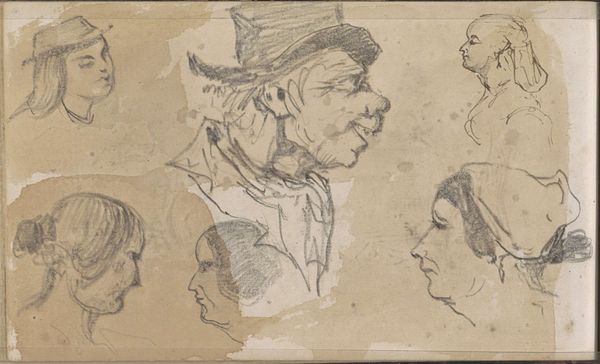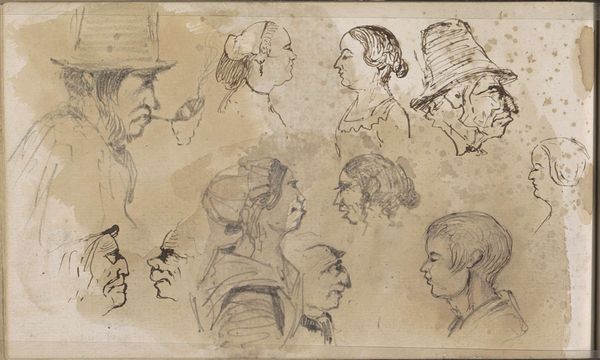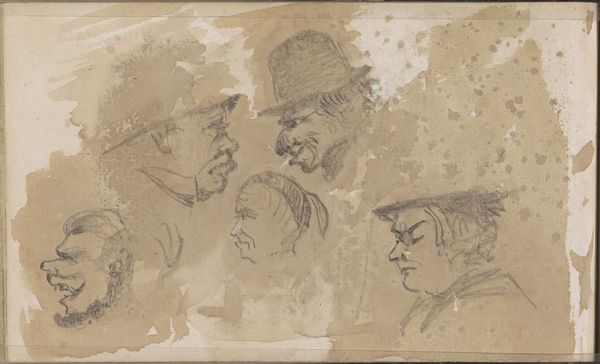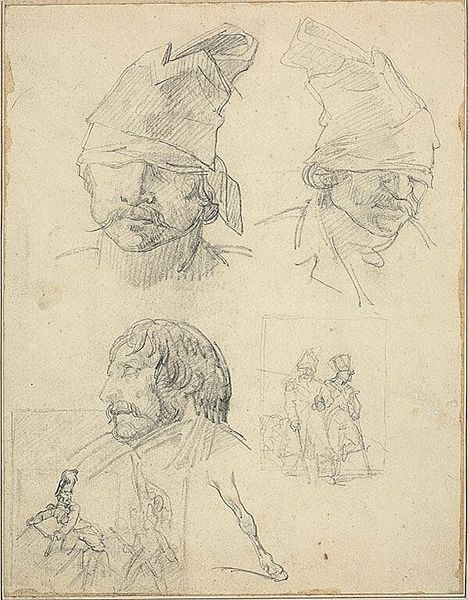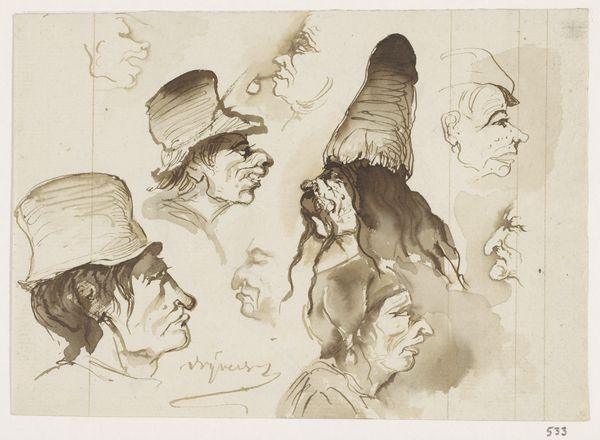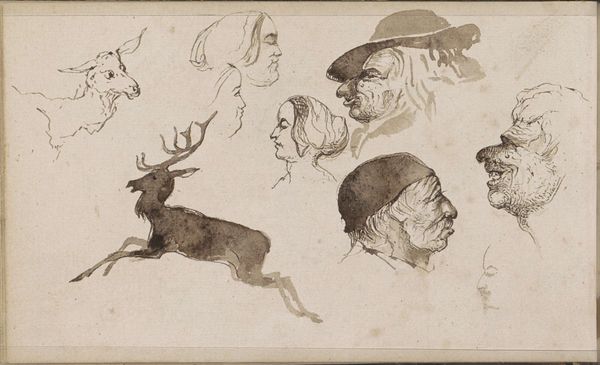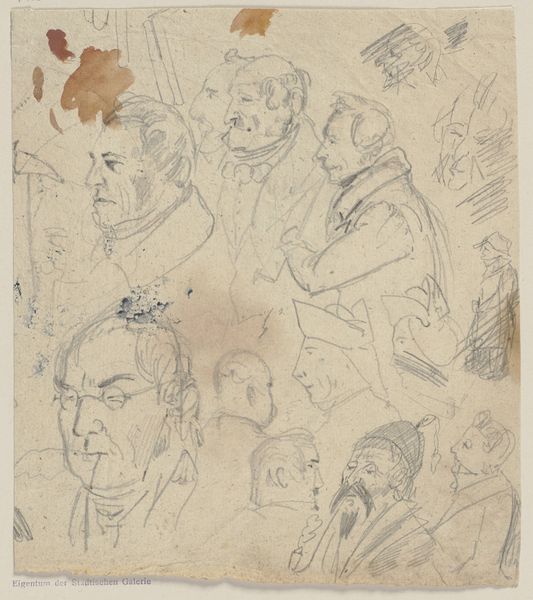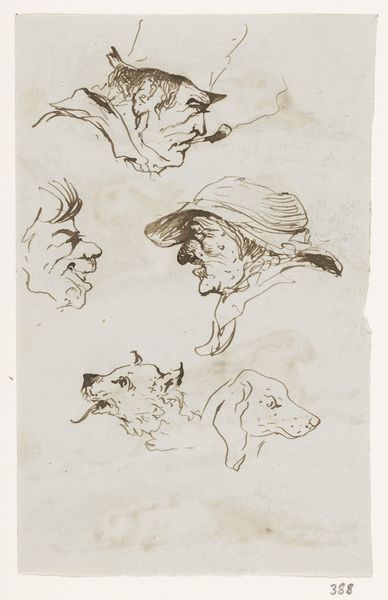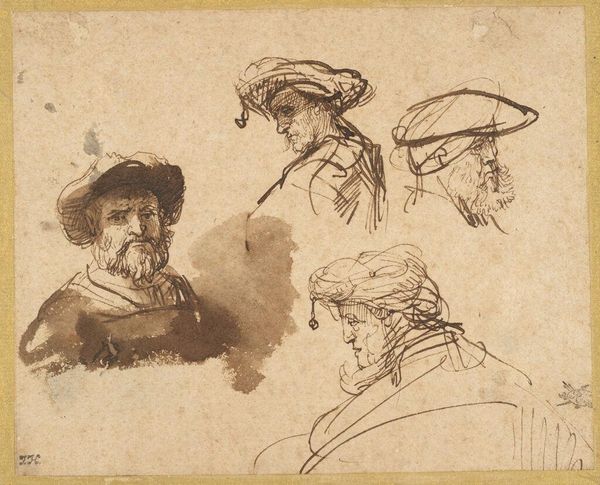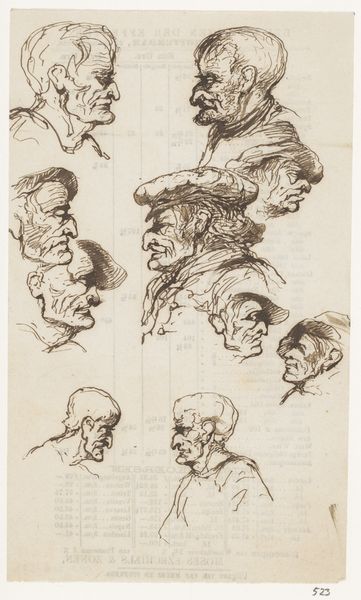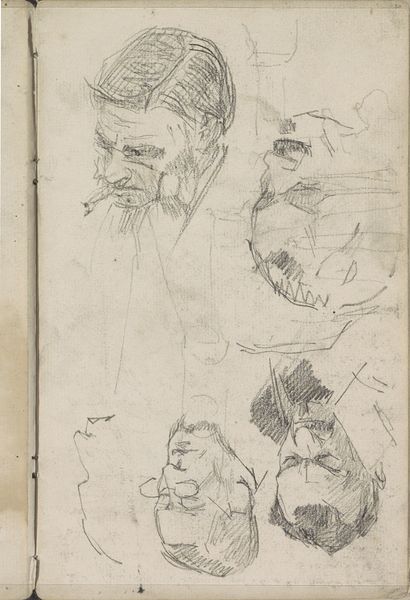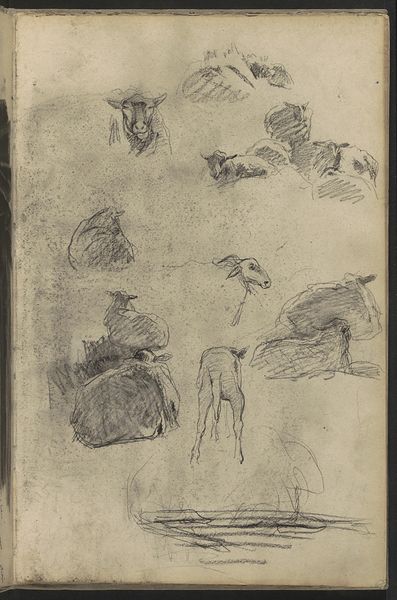
drawing, pencil
#
portrait
#
drawing
#
pencil sketch
#
pencil
#
genre-painting
#
realism
Copyright: Rijks Museum: Open Domain
Curator: Looking at Johannes Tavenraat's "Mannenkoppen," created sometime between 1864 and 1880, what immediately strikes you? It's a collection of studies, isn't it? Editor: Absolutely. The rawness is compelling. These aren't polished portraits; they feel like quick studies of everyday men, rendered with just pencil. The immediacy makes you feel like you're in the artist's studio, observing alongside him. Curator: It's interesting how you pinpoint the "everyday men." These aren't the wealthy elite. They’re working-class figures, perhaps, their faces etched with the labor and social realities of their time. Consider how their expressions reflect a lack of privilege. Editor: Right, you can almost feel the texture of their lives in the pencil strokes. The hats, for instance, are functional, worn – they speak to the material conditions of their existence, to their daily labor, you might say. It highlights a specific social milieu that Tavenraat chose to represent. Curator: Exactly! Tavenraat gives presence to the traditionally marginalized, almost inviting a consideration of gender and class dynamics. How often were men of this station given artistic visibility? Were the artistic gatekeepers reinforcing rigid ideas? Editor: Interesting point. Thinking about production and consumption, I wonder if these sketches were preparatory works? Were they for paintings meant for public consumption? I notice the realism present; this isn't idealized. There's almost a sense of the artist valuing craft, honest rendering, not necessarily the patronage of the wealthy class. Curator: That aligns so strongly with Realism’s larger project, doesn't it? This pursuit of depicting lived realities over idealized tropes. Thank you for framing Tavenraat's piece in this way. It helps illuminate important tensions of that time period. Editor: It makes one think about art production during industrialization. Was he critiquing that epoch in his material selection and figure drawings? It provides a relevant way to consider this quiet drawing.
Comments
No comments
Be the first to comment and join the conversation on the ultimate creative platform.
